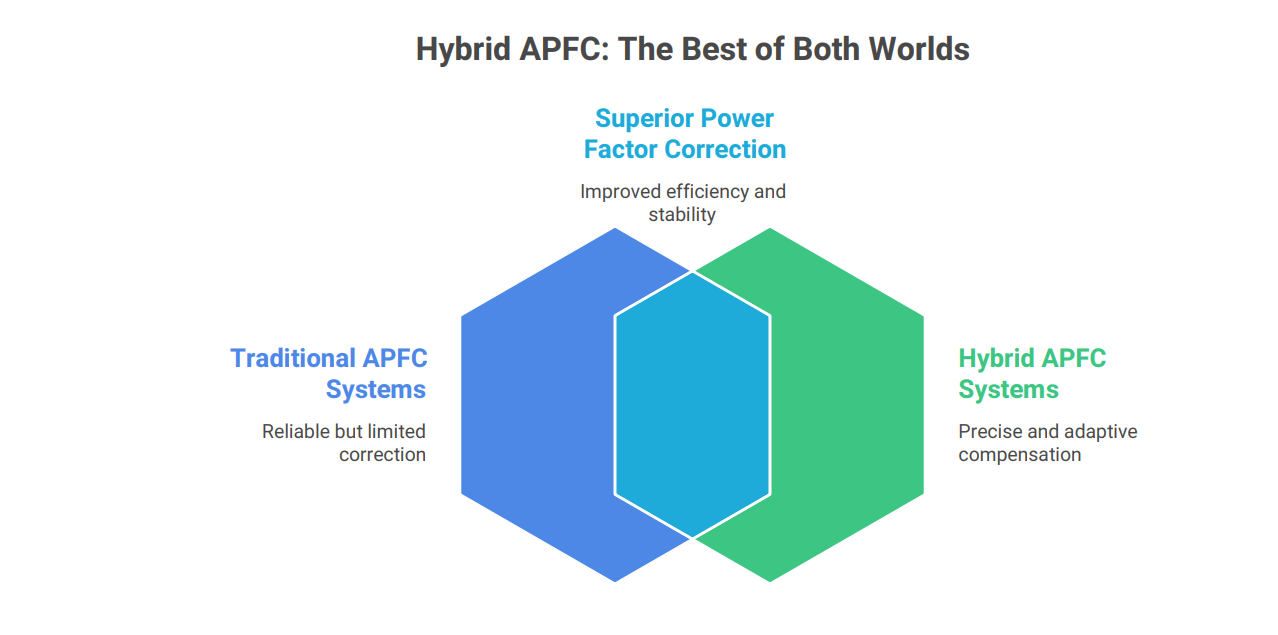Introduction to APFC and Power Factor
Power factor (PF) is the ratio of real power (kW) to apparent power (kVA) in an electrical circuit. A low power factor indicates that the electrical system is inefficiently utilizing the supplied power. This inefficiency leads to several problems, including:
• Increased energy consumption
• Higher electricity bills
• Overloaded electrical equipment
• Voltage drops
• Reduced system capacity
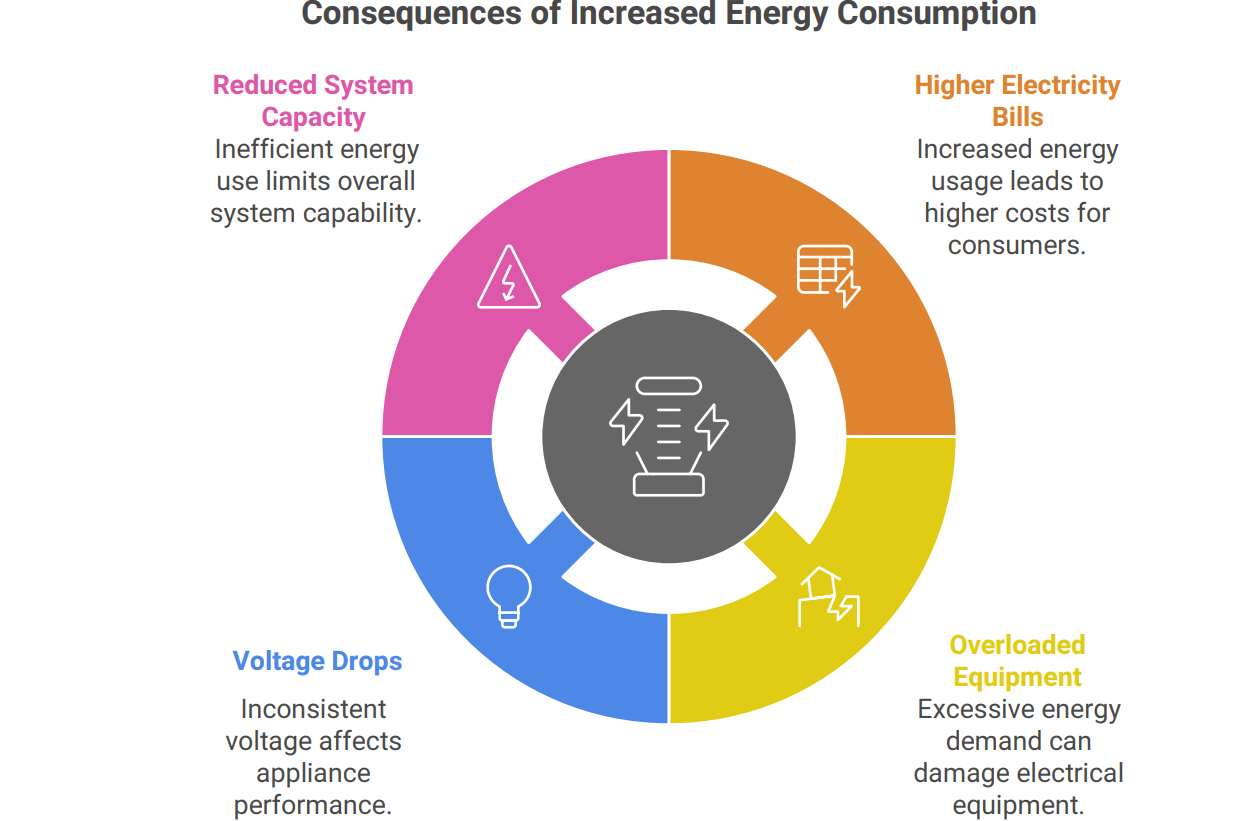
APFC systems are designed to improve the power factor by compensating for reactive power. Reactive power is the power required to establish and maintain magnetic fields in inductive loads, such as motors, transformers, and fluorescent lighting. By supplying reactive power locally, APFC systems reduce the amount of reactive power that needs to be supplied by the utility grid, thereby improving the overall power factor.
Traditional APFC Systems (Capacitor Banks)
Traditional APFC systems primarily use capacitor banks to provide reactive power compensation. These systems switch capacitors in and out of the circuit based on the measured power factor. While capacitor banks are relatively in expensive and simple to implement, they have several limitations:
• Step-wise correction: Capacitor banks provide reactive power in discrete steps, which may not be ideal for rapidly changing loads.
• Harmonic resonance: Capacitor banks can resonate with harmonic currents present in the system, leading to voltage and current distortion.
• Overcorrection: Under light load conditions, capacitor banks can overcorrect the power factor, leading to leading power factor and potential instability.
• Fixed compensation: Capacitor banks provide fixed compensation and are not suitable for dynamic loads.
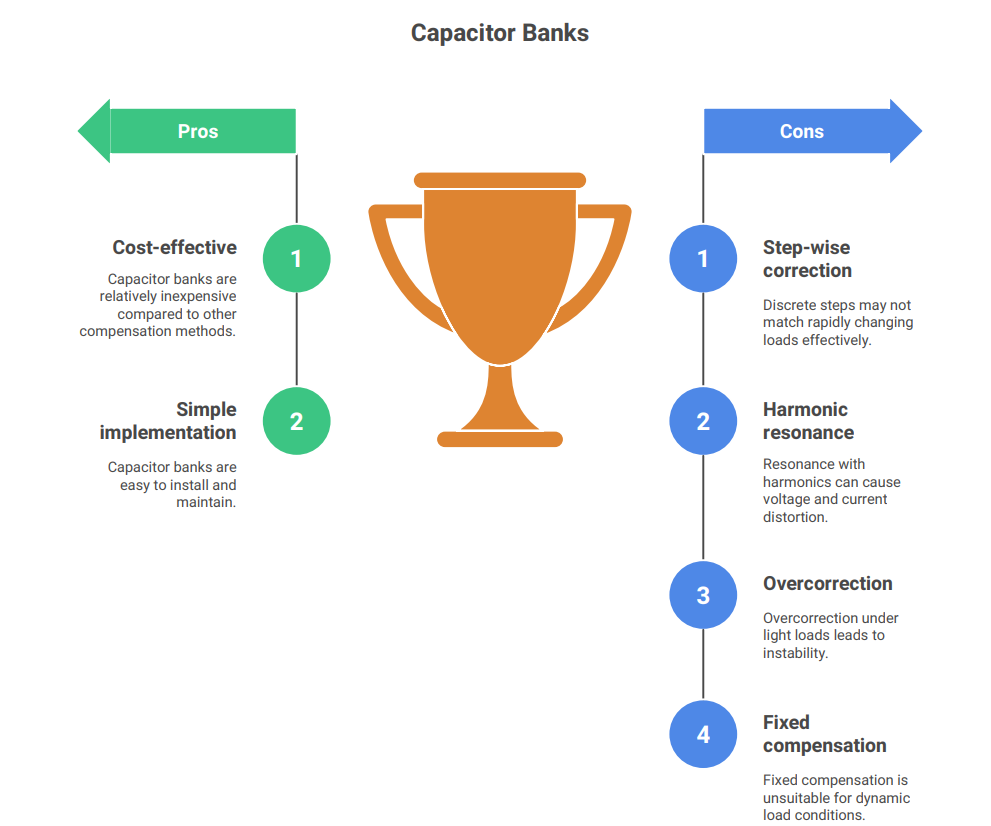
Hybrid APFC Systems
Hybrid APFC systems combine capacitor banks with other reactive power compensation techniques, such as:
• Thyristor Switched Capacitors (TSC): TSCs use thyristors to switch capacitors in and out of the circuit, providing faster and more precise reactive power compensation compared to traditional capacitor banks.
• Thyristor Controlled Reactors (TCR): TCRs use thyristors to control the amount of reactive power absorbed by an inductor. TCRs can provide continuous reactive power compensation and are effective in mitigating harmonic resonance.
• Static Var Compensators (SVC): SVCs are a type of flexible AC transmission system (FACTS) device that can provide both capacitive and inductive reactive power compensation. SVCs use thyristors to control the current flowing through capacitors and reactors, allowing for fast and precise reactive power compensation.
• Active Power Filters (APF): APFs are electronic devices that can compensate for both reactive power and harmonic currents. APFs use power electronic converters to generate reactive power and harmonic currents that are equal and opposite to those produced by the load, thereby improving the power factor and reducing harmonic distortion.

Advantages of Hybrid APFC Systems
Hybrid APFC systems offer several advantages over traditional capacitor-based systems:
• Improved Power Factor Correction: Hybrid systems can provide more precise and continuous reactive power compensation, resulting in a higher power factor.
• Reduced Harmonic Distortion: Hybrid systems can mitigate harmonic resonance and reduce harmonic distortion, improving the power quality of the electrical system.
• Faster Response Time: Hybrid systems can respond more quickly to changes in load conditions, providing better dynamic performance.
• Enhanced System Stability: Hybrid systems can improve system stability by providing voltage support and damping oscillations.
• Reduced Energy Consumption: By improving the power factor and reducing harmonic distortion, hybrid systems can reduce energy consumption and lower electricity bills.
• Increased System Capacity: Hybrid systems can free up system capacity by reducing the amount of reactive power that needs to be supplied by the utility grid.
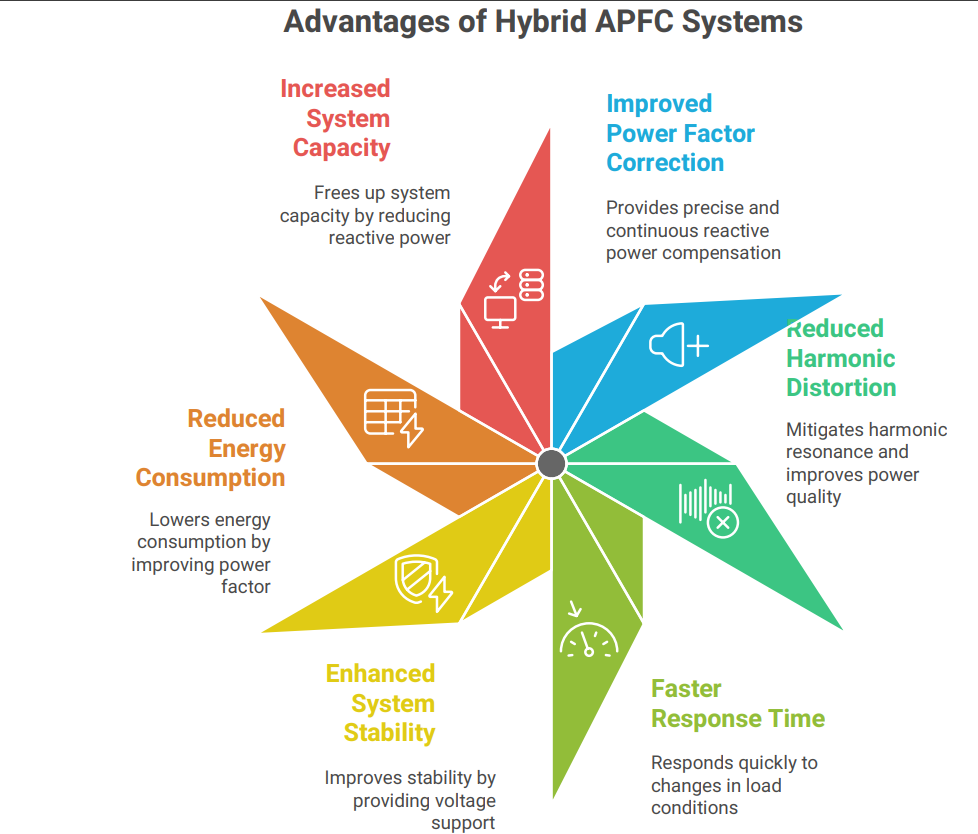
Components of a Hybrid APFC Panel
A typical hybrid APFC panel consists of the following components:
• Capacitor Banks: Used for bulk reactive power compensation.
• Thyristor Switched Capacitors (TSCs) or Thyristor Controlled Reactors (TCRs): Use for fine-tuning reactive power compensation and mitigating harmonic resonance.
• Active Power Filter (APF): Used for compensating reactive power and harmonic currents. (Optional)
• Controller: A microprocessor-based controller that monitors the power factor and controls the switching of capacitors, TSCs/TCRs, and APF.
• Current Transformers (CTs): Used to measure the current flowing through the circuit.
• Voltage Transformers (VTs): Used to measure the voltage of the circuit.
• Protection Devices: Circuit breakers, fuses, and surge arresters are used to protect the APFC panel from overcurrent, overvoltage, and other faults.
• Enclosure: A metal enclosure that houses all the components of the APFC panel.

Applications of Hybrid APFC Panels
Hybrid APFC panels are used in a wide range of applications, including:
• Industrial Plants: To improve the power factor of industrial loads, such as motors, transformers, and welding machines.
• Commercial Buildings: To improve the power factor of commercial loads, such as lighting, HVAC systems, and computers.
• Data Centers: To improve the power factor of data center loads, such as servers, UPS systems, and cooling equipment.
• Renewable Energy Systems: To improve the power factor of renewable energy systems, such as solar and wind farms.
• Electric Vehicle Charging Stations: To improve the power factor of EV charging stations.
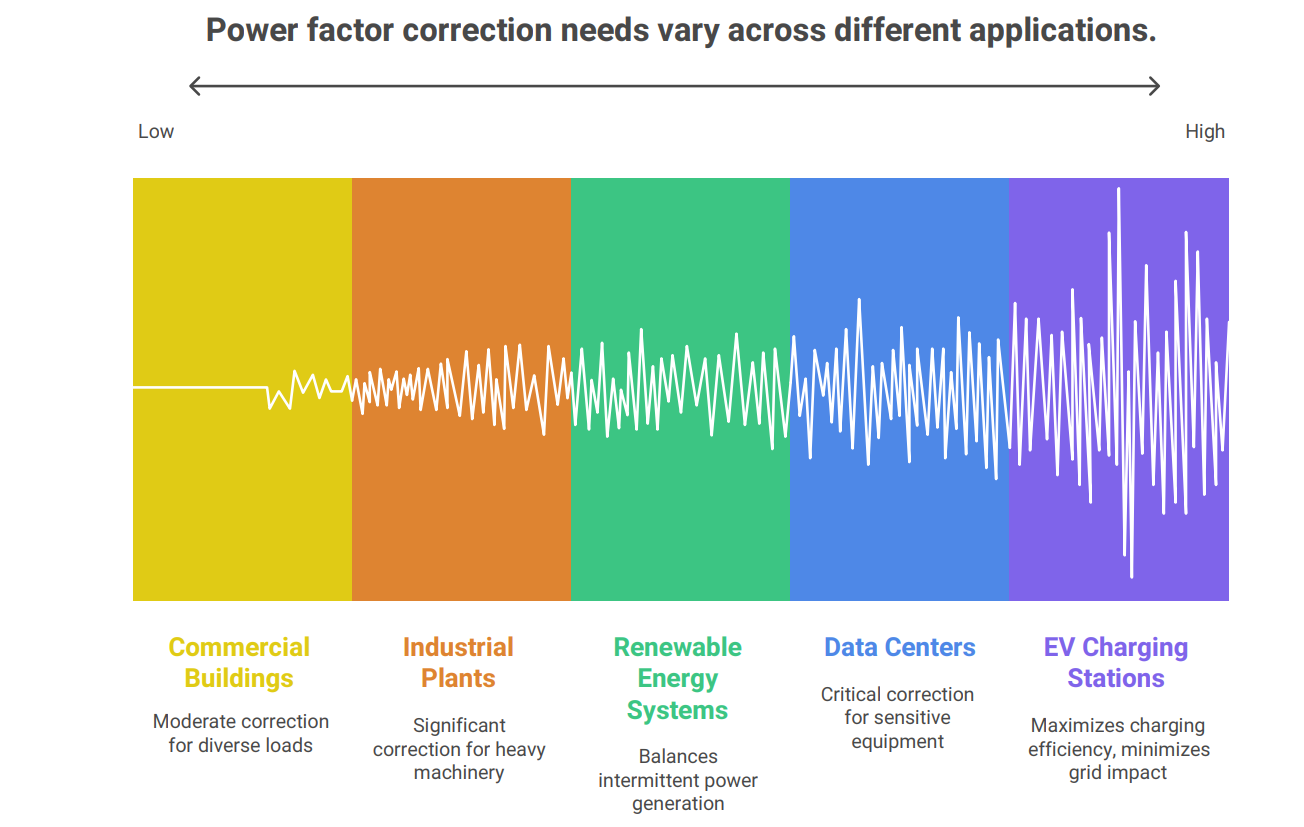
Selection Criteria for Hybrid APFC Panels
The selection of a hybrid APFC panel depends on several factors, including:
• Load Characteristics: The type of load, its power factor, and its harmonic content.
• System Voltage and Current: The voltage and current of the electrical system.
• Required Power Factor Correction: The desired power factor after compensation.
• Harmonic Mitigation Requirements: The level of harmonic mitigation required.
• Budget: The available budget for the APFC system.M

Conclusion
Hybrid APFC panels offer a superior solution for power factor correction compared to traditional capacitor-based systems. By combining different reactive power compensation techniques, hybrid systems can provide more precise, faster, and more reliable power factor correction, leading to improved energy efficiency, reduced harmonic distortion, and enhanced system stability. As power quality requirements become more stringent, hybrid APFC panels are becoming increasingly popular in a wide range of applications.
